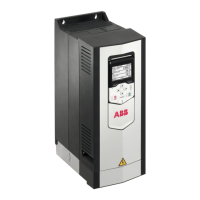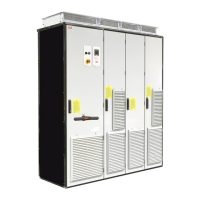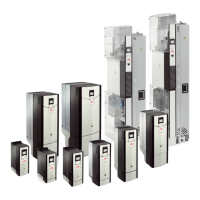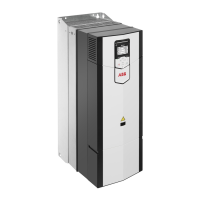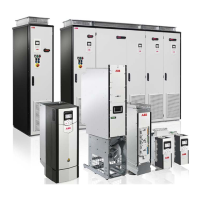If the three-winding transformer supplies power to multiple 12-pulse drives, derate
the drive power rating from the nominal value according to the table below.
Drive power rating (%)Number of 12-pulse drives
1001
902
853
824
805
Selecting the supply disconnecting device
The drive is equipped with a main disconnecting device as standard. Depending on
the size of the drive, and the selected options, the type of disconnecting device may
vary. Examples: switch-disconnector, withdrawable air circuit breaker, etc.
Selecting the main contactor or breaker
Depending on the drive type and size, it is fitted with a main contactor or a main
breaker by default. With certain drive types, you can select either of the two.
Examining the compatibility of the motor and drive
Use asynchronous AC induction motors, permanent magnet synchronous motors, AC
induction servomotors or ABB synchronous reluctance motors (SynRM motors) with
the drive.
Select the motor size and drive type from the rating table on basis of the AC line
voltage and motor load. You can find the rating table in the appropriate hardware
manual. You can also use the DriveSize PC tool.
Make sure that the motor can be used with an AC drive. See Requirements
tables (page 93). For basics of protecting the motor insulation and bearings in drive
systems, see Protecting the motor insulation and bearings (page 92).
Note:
• Consult the motor manufacturer before using a motor with nominal voltage that
differs from the AC line voltage connected to the drive input.
• The voltage peaks at the motor terminals are relative to the supply voltage of the
drive, not to the drive output voltage.
■
Protecting the motor insulation and bearings
The drive employs modern IGBT inverter technology. Regardless of frequency, the
drive output comprises pulses of approximately the drive DC bus voltage with a very
short rise time. The pulse voltage can be expected to be around double at the motor
terminals, depending on the attenuation and reflection properties of the motor cable
and the terminals. This can cause additional stress on the motor and motor cable
insulation.
92 Guidelines for planning the electrical installation
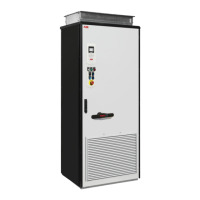
